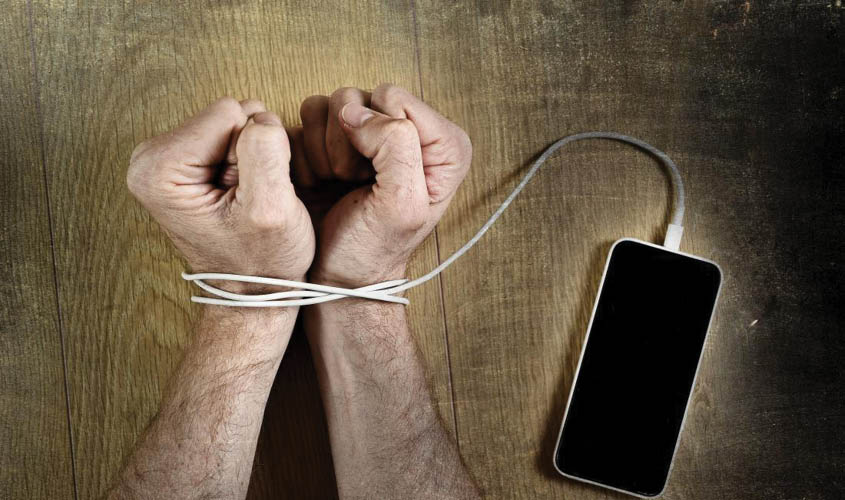Psychologists have found that some platforms have an alarming effect on the mental health of young people, including high levels of anxiety and depression.
Picture the cartoon. A teenage Indian boy, kitted up to play cricket, is pleading “let’s play”, while the rest of the team are lying in a circle on the grass all absorbed with their mobile phones. Or another cartoon. A mother in her kitchen is saying “Isn’t it great to have some quality time with the family?”, while looking at her husband and five children sitting round the table, all engrossed in their mobile phones. Like all good cartoons these are not hilariously funny, but they hit the button. In this case addiction to social media.
Last year there were about 200 million social network users in India, a number expected to rise to just under 400 million by 2022. Unsurprisingly, the most popular social networks were Facebook and YouTube. Facebook alone is expected to rise to about 319 million users in India by 2021. Users are predominantly young and male, with only 23% being female. Half of Facebook users are under 25, with only 3% being over 55. Clearly social media is a young-persons activity in India, as in most countries.
In many ways the wide use of social media is great news, as there are obvious huge benefits. How many grandparents have the joy of keeping in visual touch with grandchildren sometimes separated by huge distances or even continents? Academic research is available to a wider audience, allowing people to access previously inaccessible educational resources. Job seekers can find work and companies can search for suitable candidates using professional networking sites. Even overall well-being can be improved by providing users of social media with a large social group in order to share experiences and benefit from others. The list goes on and on.
There are, of course, the downsides and with more than 2 billion smartphone users across the globe, this relatively new activity has been a rich source of data for psychologists looking to examine the relationship between smartphone use, personality, cognition, health, and behaviour. Mostly the results are worryingly negative, which is not surprising as everywhere you go nowadays, you come across people with their eyes glued to their phones. A recent report revealed that the average Brit checks their phone 28 times a day. That’s at least once an hour and more than 10,000 times a year!
According to a survey by the UK Royal Society for Public Health, social media is more addictive than cigarettes and alcohol. Some young people have never known a world without social media and are using it more than ever before. They give away information without thinking or knowing the consequences and get sucked into the world of online games and sometimes dangerous online trends. Most young people find that it has become second nature to log on to their social media profiles immediately after waking up, scrolling through hundreds of posts, “liking” and “sharing” as they go.
Social media was created to be a positive outlet, a platform for people to express themselves. Psychologists have now found that some platforms are having an alarming effect on the mental health of an increasing number of young people. Some of the worst are image-sharing platforms which can cause a high level of anxiety and depression. Looking at people like yourself having a great holiday or enjoying nights out, when you are not, can create a “compare and despair” attitude. It’s a short step from this to serious depression.
By far the darkest and most unpredictable place on social media is “cyber bullying”. Few young people have sufficiently thick skins not to be affected by online criticism and the effects can be devastating. Take the case of Sadie Riggs, a bubbly 15-year-old, who lived in a small US town near Pittsburgh. In the final year of her life, Sadie was tormented by her schoolmates on Facebook and Instagram. “The kids started making fun of her for her size, red hair and braces”, said her mother. “They teased her that only the devil had red hair and taunted her that it’s best to commit suicide.” CNN reported that Sadie’s mother went to the police and even contacted Instagram, but nothing was done. In despair, the mother even smashed Sadie’s phone when she was screaming every day that she couldn’t take any more. A week later, Sadie hanged herself.
While it’s unclear how much of a role social media plays in teenage suicides, recent studies have tied it to increased anxiety. Only this week, a major UK study revealed that as many as 22% of 14-year-old girls admitted to self-harm, mostly due to bullying or body-image issues on social media. Even more worryingly, a US report last year found the suicide rate among teenage girls hit a 40-year high in 2016, having doubled over the previous eight years.
Any addiction is extremely hard to control and a solution for social media will be challenging. Experts believe that it’s easier to control cocaine or meow meow. Rejoice, however, because help is on hand in the form of Melania Trump, wife of the world’s most famous cyber bully. Speaking at a Cyberbullying Summit in Maryland last week, Melania called for “more kindness on the internet”. As it was the very same day that her husband tweeted that John Brennan was “the worst CIA director in our country’s history”, the rich irony was not lost.
John Dobson worked in UK Prime Minister John Major’s Office between 1995 and 1998 and is presently Chairman of the Plymouth University of the Third Age.

